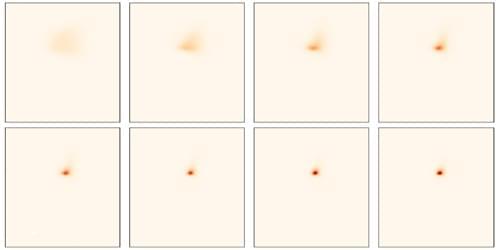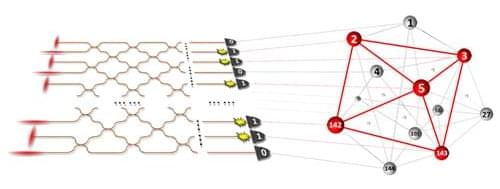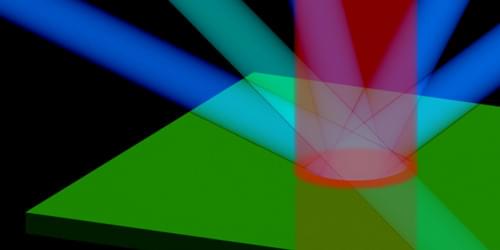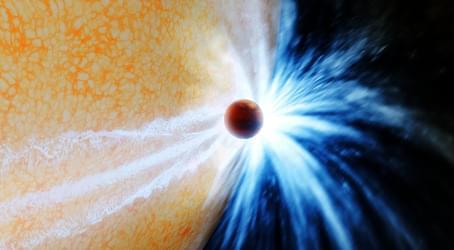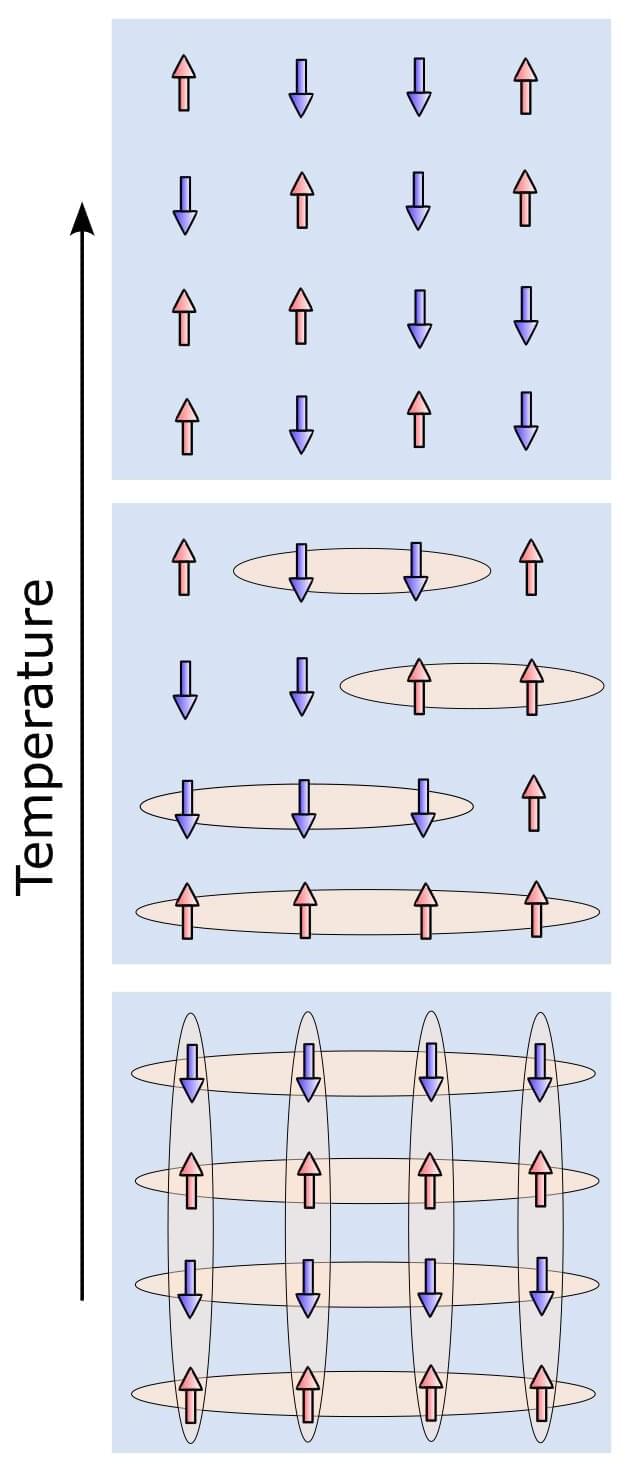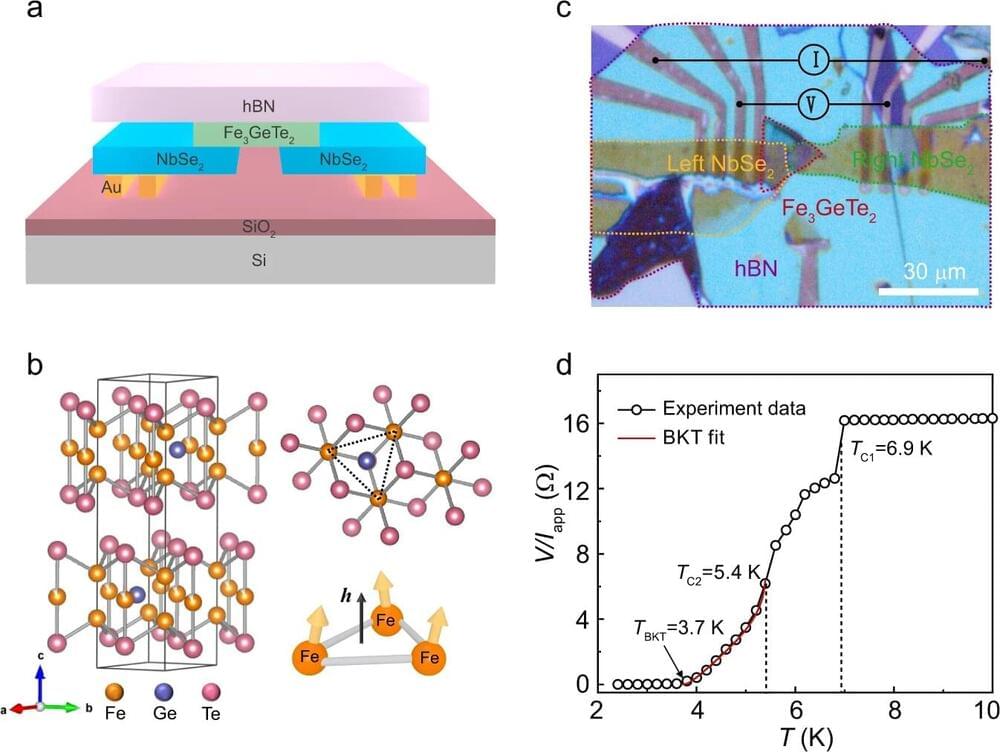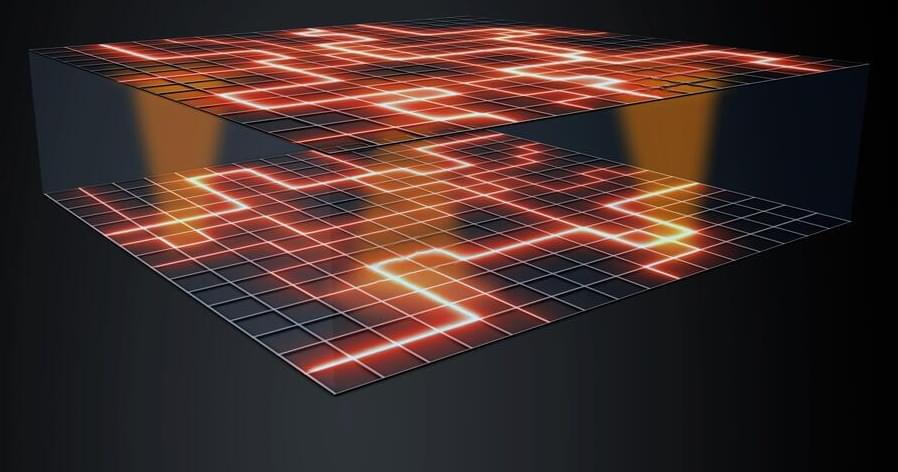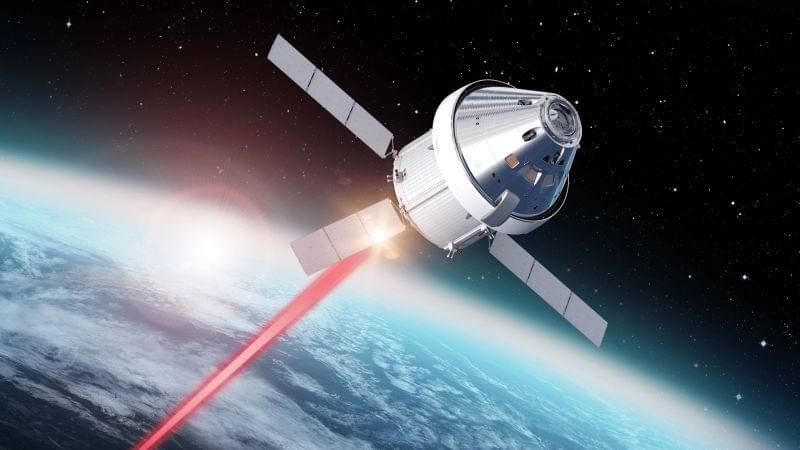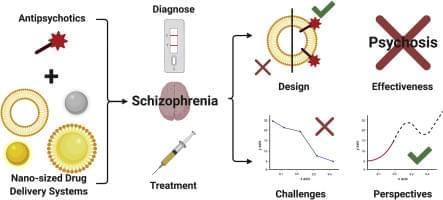A novel laser cooling and trapping technique squeezes large numbers of molecules into a confined space while keeping them ultracold.
A quantum photonic device can perform some real-world tasks more efficiently than classical computers.
Experiments probing quasiparticles in semiconductor microcavities offer unprecedented insights into the dynamics of quantum fluids of light.
Superfluidity [1, 2], the ability of a fluid to flow without friction, isn’t restricted to systems described by hydrodynamics. Over a decade ago, optics researchers started to take an interest in superfluids and other quantum fluids [3], driven by the realization that light propagating in a nonlinear medium can exhibit quantum hydrodynamics features [4]. Two platforms emerged for the study of these “fluids of light”: semiconductor microcavities in which photons are confined [5] and propagating geometries in which photons travel in a bulk medium [6–8]. Both configurations allow photons to acquire an effective mass and experience an effective mutual interaction—properties that can lead them to collectively behave as a quantum fluid.
For the first time, astronomers have spotted an evolving star engulfing an orbiting planet.
When our Sun nears the end of its life, it will start to swell. During this expansion, which is expected to happen in some 6 billion years, the dying Sun will engulf our Solar System’s inner planets, including Earth. Though scientists are certain of Earth’s far-future fate, no direct observation had been made of a dying star swallowing an orbiting planet, until now [1].
The unique observation comes from Kishalay De of the Massachusetts Institute of Technology and his colleagues. The team found the planet-eating star in data taken as part of the Zwicky Transient Facility (ZTF), a large-area optical survey of the night sky. While comparing a few weeks’ worth of consecutive ZTF scans—a new survey of the sky is performed every 48 hours—a brightening star 12,000 light-years from Earth caught De’s attention, he says.
Physicists have discovered “stacked pancakes of liquid magnetism” that may account for the strange electronic behavior of some layered helical magnets.
The materials in the study are magnetic at cold temperatures and become nonmagnetic as they thaw. Experimental physicist Makariy Tanatar of Ames National Laboratory at Iowa State University noticed perplexing electronic behavior in layered helimagnetic crystals and brought the mystery to the attention of Rice theoretical physicist Andriy Nevidomskyy, who worked with Tanatar and former Rice graduate student Matthew Butcher to create a computational model that simulated the quantum states of atoms and electrons in the layered materials.
Magnetic materials undergo a “thawing” transition as they warm up and become nonmagnetic. The researchers ran thousands of Monte Carlo computer simulations of this transition in helimagnets and observed how the magnetic dipoles of atoms inside the material arranged themselves during the thaw. Their results were published in a recent study in Physical Review Letters.
In a study published in Nature Communications, Prof. Xiang Bin’s group from University of Science and Technology of China of the Chinese Academy of Sciences, in collaboration with Assoc. Prof. Wang Zhi from Sun Yat-sen University, discovered the long-range skin Josephson supercurrent across a van der Waals ferromagnet.
They bridged two spin-singlet superconductors NbSe2 (S) by constructing the van der Waals ferromagnet metal Fe3GeTe2 (F), and observed long-range supercurrent in the lateral Josephson junction (S/F/S) for the first time, which exhibits astonishing skin characteristics.
Ferromagnetism and superconductivity are two antagonistic macroscopic orderings. When the singlet supercurrent enters the ferromagnet, rapid decoherence of the Cooper pairs will be triggered.
In 2010 Prof. Shlomo Havlin and collaborators published an article in the journal Nature proposing that the abrupt electricity failure causing the famous 2003 Italy blackout was a consequence of the inter-dependency of two networks. According to Havlin’s theory the dependency between the power network and its communication system led to cascading failures and abrupt collapse. Havlin’s seminal work ignited a new field in statistical physics known as “network of networks” or “interdependent networks” and paved the way for understanding and predicting the effects of the interaction between networks.
The main novelty of Havlin’s model is the existence of two types of links that represent two qualitatively different kinds of interactions. Within networks, links between nodes describe connectivity such as electric power or communication connections. Between networks, on the other hand, links describe dependency relationships in which the functionality of a node in one network depends on the functionality of a node in the other. The communication hubs need electricity and the electric power stations depend on communication control. This dependency leads to a cascading effect in which failure of a single node in one of the networks could lead to an abrupt breakdown of both networks.
Over the past decade or so since, Havlin, from the Department of Physics at Bar-Ilan University in Israel, and others have applied this concept to a variety of abstract systems, such as the internet, road traffic, the economy, infrastructure, and more. But being a theorist, Havlin was unable to manifest the hypothesis on real experimental physical systems and thus the theory couldn’t be confirmed in controlled experiments, nor could it be implemented for device-type applications.
A new laser capability aboard the Artemis II crewed mission to journey around the moon will beam back high-definition video and images of the lunar surface to Earth.
Google Keynote (Google I/O ‘23)
Posted in futurism
Tune in to find out how we’re furthering our mission to organize the world’s information and make it universally accessible and useful.
To watch this keynote interpreted in American Sign Language (ASL), please click here:
Tweet with us on Twitter: https://twitter.com/google.
Follow us on Instagram: https://www.instagram.com/google.
Join us on Facebook: https://www.facebook.com/Google.
#GoogleIO
Year 2020 😗😁
Schizophrenia is one of the top 25 causes of global diseases burdens in terms of years lived with the disease and the emotional and economical strains it imposes on the society. Several strategies have been used to treat the patients, specially using typical and atypical psychoactives. However, due to its multifactorial characteristic and patient resistance, schizophrenia is still a difficult disease to diagnose and treat. Thus, new strategies for diagnostics and treatment must be researched to optimize the efficacy and reduce the side effects of the actual therapy. Nanomedicine tries to improve low-weight molecular agents for treatment of diseases through the use of nanoscaled carriers. Among nanomedicine, nanopsychiatry specifically deals with the potential role of nanotechnology in solving psychiatry diseases problems. Therefore, the objective of this work is to provide an overview of the state of the art of nanopsychiatry in the sense of treating schizophrenia.
